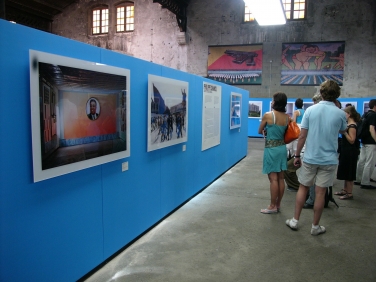|
by John G. Morris |
 |
||||||
|
Arles is the mother of all photography festivals. It was founded 37 years ago by photographer Lucien Clergue and two other Arlesiens. Lucien was recently elected to the Academy of Fine Arts at the Institut de France, the first photographer to be so honored.
In 1980 I went to Arles to project the work and the words of W. Eugene Smith. You could have heard a pin drop in the great old Roman amphitheater. After we moved to Paris in 1983, my wife Tana and I went to Arles almost every year, the last time in 2002 when the great Czech photographer Josef Koudelka took over the town. Thereafter, it seemed, Arles to me was overshadowed by the photojournalism festival at Perpignan called Visa Pour l’Image.
Now Arles is back, stronger than ever under the direction of Fran?ois Hebel and his guest curator, Raymond Depardon, the Magnum photographer and filmmaker. Depardon, the most prolific of all French photojournalists, assembled an incredible 50 exhibitions for this year’s festival including the finest show of classic American photography ever seen in France, drawn from museums and private collections. Raymond’s superb eclectic taste was evident everywhere as he brought together the worlds of photojournalism and art.
Several other exhibitions were remarkable. Susan Meiselas of Magnum showed huge duplicate transparencies of her color coverage of the 1978 Sandinista revolution in Nicaragua. With funds from the David Rockefeller Center for Latin American Studies and others, she enlarged 18 of her pictures to mural size and installed them near the places where they were originally taken. An accompanying video showed the reactions, mostly positive, of those who now live there. ? John G. Morris
John G. Morris, who was Robert Capa’s editor at LIFE magazine on D-Day, has had a long and illustrious career in photojournalism. After working for LIFE in New York, Los Angeles, Washington, London, Paris and Chicago during World War II, he went on to become Picture Editor of Ladies’ Home Journal; Executive Editor of Magnum Photos; Assistant Managing Editor for Graphics at the Washington Post; Picture Editor of The New York Times, and the Paris correspondent of National Geographic from 1983-89. Morris is the author of “Get the Picture: A Personal History of Photojournalism” (University of Chicago Press, 2002). He lives in Paris. |
|||||||
Skip to content
Musings by Shahidul Alam


